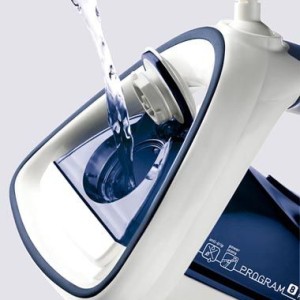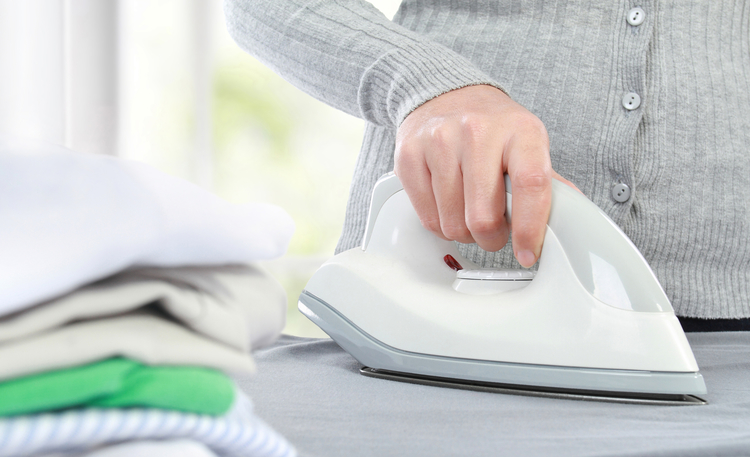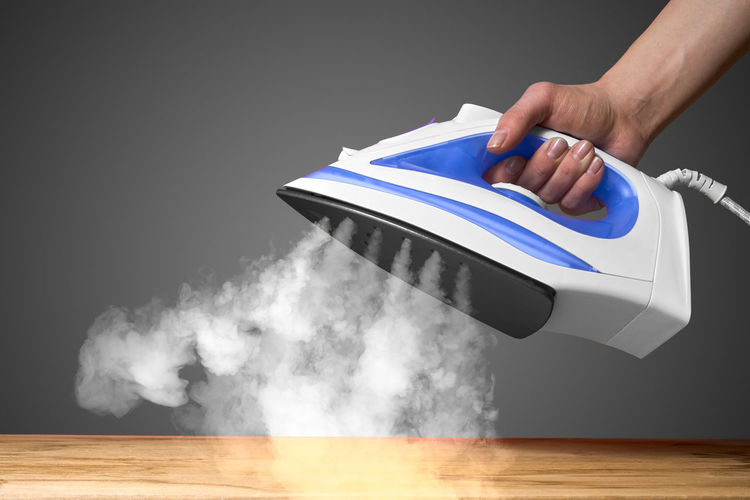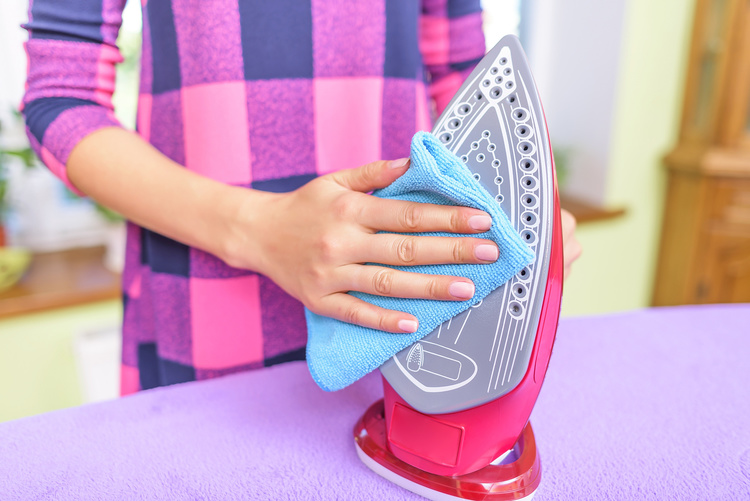Why does water flow out of the iron?

- Maybe the problem is in the regulator?
- Where does the excess water in the iron come from?
- Why does the valve not close?
- Do you follow the instructions?
- What are the problems with the cover?
- Where does too much steam come from?
- Why does rusty water flow from the iron?
- How does the quality of water poured into the iron affect?
- What tools do you use?
- The iron is not turned on, but there is a puddle under it - what should I do?
A steam iron is certainly a convenient thing. Caring for clothes without him would be difficult. However, any technique fails periodically. For example, at one not very pleasant moment, not the steam but the most ordinary water begins to flow from the holes on the sole. So why does water flow out of the iron and is there anything you can do about it yourself? Let's figure it out.
to contents ↑Maybe the problem is in the regulator?
The owner of the iron does not have to be a master at repairing electrical appliances, however, knowing the principle of operation of the unit with a steam generator will not hurt. First, let's see how and where the water gets, and then the steam.
If you ever had to disassemble an iron, then you probably saw that water from the tank flows through a special valve, which is located on the back of the sole, on its inside.
Another important detail is the regulator that you use, it is impossible to set the mode without it. Thanks to this detail, a strictly defined amount of steam gets onto the fabric: for some materials it should be more, for others - less. Steam is formed because the temperature to which your iron is heated is equal to the temperature at which water changes from a liquid to a gaseous state. It is not directly related to vaporization, but, strangely enough, instead of steam, water can also flow because this particular part is faulty. This happens when it is not possible to set the desired temperature. Accordingly, the sole of the iron may simply not warm up, and the water does not evaporate, but flows through the holes.
In this case, the best option is to go to the service center. Do not experiment. Bork, Tefal and other reputable manufacturers are happy to provide you with this service. Even if you manage to buy a regulator separately, this does not mean at all that it fits this model. But you should definitely not throw away the iron right away - repairs in any case will be cheaper than buying a new unit.
to contents ↑Where does the excess water in the iron come from?
The unit begins to leak if the water does not evaporate or evaporates, but not all. There are only 3 reasons for this unpleasant phenomenon:
- the valve is out of order;
- worn silicone pads;
- the owner has carefully read the instructions and is doing something wrong.
Suppose you thoroughly studied the documentation, have been using the iron for some time and everything was in order, but here is a surprise. The valve seems to be completely closed, the temperature seems to correspond, and a trickle drips or even flows out of the holes. This means that the valve is defective. But this must be verified. For this:
- Fill the water tank.
- Switch off the steam supply (the plug must be pulled out of the socket).
- Holding the iron horizontally, shake it.
- See if water leaks - if so, the valve does not close well.
Why does the valve not close?
Typically, the valve does not close properly for one simple reason. It has elements made of rubber, i.e. gaskets.This material reacts very poorly to high temperature and humidity. Rubber begins to crack, loses its ability to stretch, respectively - loosely closes what it should close.
It is unlikely that you will be able to replace the valve yourself, besides, not all irons can do this. Therefore, the simplest option is to take the unit to a service center, preferably the same company that produced it. In such centers there are necessary spare parts that are suitable specifically for the models of this manufacturer, and the technologies have been worked out. So, if you have “Tefal” or “Bork i604”, you should not buy valves from “Bosch” or “Samsung”, they may not stand in the designated place.
to contents ↑Do you follow the instructions?
If you tried to shake the iron, and the water did not leak, then the valve is in order. It's time to analyze whether you are observing the rules for using the iron, first of all, with steam boost. Here you need to be very careful:
- Fill the tank with water.
- Plug the iron into a power outlet.
- Set the dial according to the type of fabric.
- Place the iron upright.
- Allow the sole to warm up to the desired temperature - just wait for the indicator light to tell you that the unit is ready.
- Turn on the “Steam” function.
to contents ↑Important! If instead of steam, water flows through a steam boost, it means that the iron simply did not warm up to the desired temperature.
What are the problems with the cover?
Pay attention to how well the lid of the hole in which you fill the water is closed. Oddly enough, this is one of the most common reasons why something spills from the iron. It must be closed carefully, without pressure, but tightly, that is, until it clicks.
Some housewives neglect this rule, fearing that the lid will break. Of course, you shouldn’t push hard, but you can’t even leave a tiny click.
to contents ↑Where does too much steam come from?
It happens that water gets to the fabric even from a perfectly working iron, when the regulator is in place, the cover is closed, and the valve is working. Where does it come from? It may appear if the pair is too much:
- A lot of steam comes out of the holes.
- The sole of the iron cools a little.
- Steam condenses on the sole.
- Water gets on the fabric.
There is only one way out of this situation - to set the regulator strictly to the division that corresponds to the type of tissue.
to contents ↑Why does rusty water flow from the iron?
Even worse, when not plain water runs out of the iron, but rusty, that is, yellow or brown. Color depends on the scale of the tragedy. This means that the silicone fragments are worn. They are in almost all models of modern irons.
Just yesterday, your “Brown” or “Philips” worked like a clock, and then it flowed, and even so ugly. If the temperature regulator performs its function poorly, the internal parts overheat so that even heat-resistant silicone does not withstand. In this case, it is better to replace the thermostat immediately.
to contents ↑Important! Do not try to wash the iron with solvents to get rid of rust - this will not work.
How does the quality of water poured into the iron affect?
It would seem that the question is, water - it is water. But it is not so. Water is different in chemical composition. For example, various salts may appear in it, in which case it is called hard. Not only does it evaporate worse, it also forms scale, which, by the way, can also cause rusty water to flow from the iron.
Even soft tap water is not always suitable. Various disinfectants are added to it, as a result of which it slightly changes its properties. So that it is better to use bottled water intended for boiling in electric kettles. It will fit for the iron. The ideal option is distilled water, without any salts. It can be bought in pharmacies, car and hardware stores.
If, however, scale became the cause of the rust, use the self-cleaning system of your machine. For this:
- Place the iron closer to the bathtub or sink.
- Pour as much water as possible into the container.
- Set the heating control to maximum.
- Turn on the iron.
- Set the steam control to zero.
- Run the self-cleaning system - there is a special button for this.
to contents ↑Important! The self-cleaning system allows you to get rid of rust, but not from leakage.
What tools do you use?
There are quite a lot of ironing tools on sale now. They allow the fabric to hold its shape better. This is a good thing, but not if you need to steam clothes. The use of such additives can help steam to form more slowly.
The iron is working, the regulator is on the division on which it is needed, the steam seems to have gone, and the beloved skirt has nasty water marks. In this case, it is better to refuse any additives at all. And it is necessary to properly wash the tank itself so that not even a drop of foreign substance is left in it.
to contents ↑The iron is not turned on, but there is a puddle under it - what should I do?
It happens that they did not use the iron for some time, he stood calmly, and under it there were traces of leaks or even a puddle. This suggests that the unit was stored incorrectly:
- An iron that is currently not being used must be upright.
- All water from the tank must be drained.
- The regulator should be set to zero.
Important! Keeping the iron upright is a very good habit. A puddle is the smallest evil you may encounter if you left the machine incorrectly. It is much worse if you leave it horizontally and forget to turn it off. Well, if your oversight is limited only to the appearance of tan marks on the board, but a real fire can happen.
To cope with an undesirable phenomenon, it turns out, is not so difficult. The main thing is to understand what exactly happened, and try to follow the most common rules for handling electrical appliances. And if a problem arises, then the instructions in this article and a video example of troubleshooting will help you solve it.
- How to choose a vacuum cleaner taking into account the characteristics of the house and coatings?
- What to look for when choosing a water delivery
- How to quickly create comfort at home - tips for housewives
- How to choose the perfect TV - useful tips
- What to look for when choosing blinds
- What should be running shoes?
- What useful things can you buy in a hardware store
- Iphone 11 pro max review
- Than iPhone is better than Android smartphones






